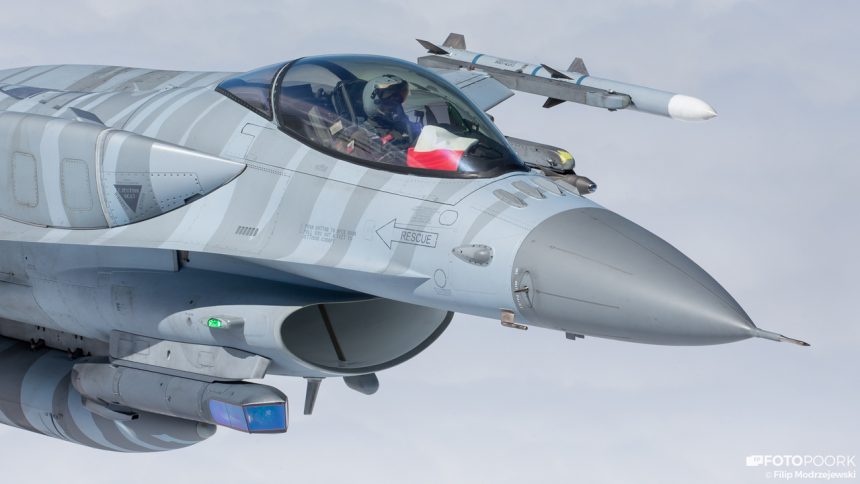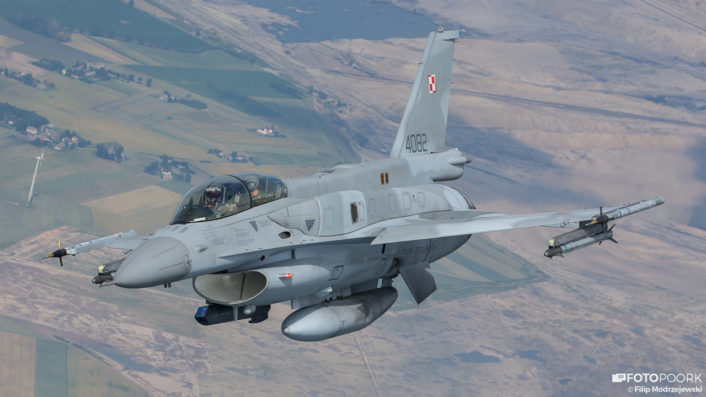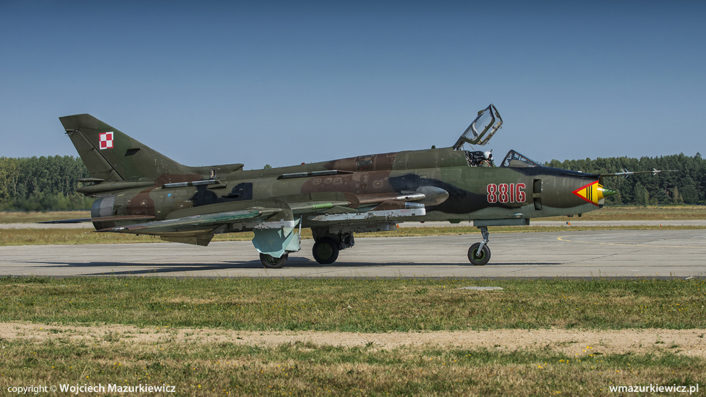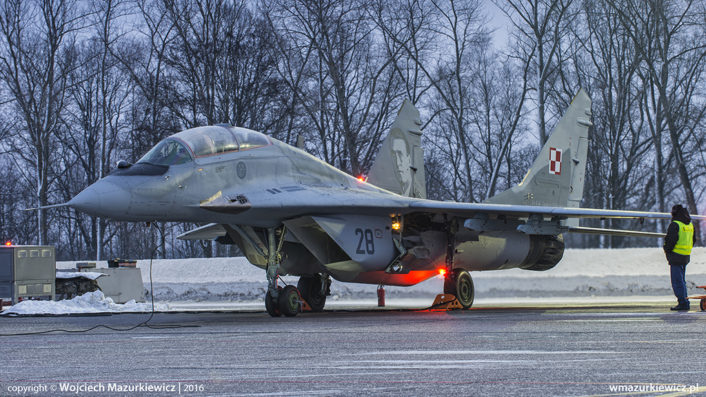Polish Parliamentary Committee on National Defense analyzed the current state of the Polish Air Force’s F-16 fighter fleet, its future, as well as plans related to the M-346 AJTs and JASSM / JASSM-ER missiles.
According to the report issued by Tomasz Dmitruk of the Polish “Dziennik Zbrojny” outlet, on Mar. 22, during the meeting of the Polish Parliamentary Committee on National Defense, Division General Pilot Jan Śliwka, who is also acting as the Deputy Commander of the Polish Armed Forces, presented the Polish Parliament the history and capabilities possessed by the F-16 multi-role jet aircraft, along with an overview of their technical status, maintenance requirements, armament and pilot’s training program. The General has also talked about the missions assigned to the backbone of the Polish Air Force.
The information presented during the event also provided a unique insight into the operations of the aircraft.
7-8 out of 48 jets are currently undergoing maintenance or overhauls – this constitutes 14-17% of the fleet, still leaving around 85% of the aircraft combat-ready. A single F-16 jet can spend 8,000 hours in the air, which means that total lifetime is equal to 384,000 hours (48 aircraft, 8000 hours each). Based on the report issued by Dmitruk, all of the Jastrząb (Polish Air Force’s name ascribed to the F-16) jets have spent 53,000 hours in the air so far, which amounts up to 14% of the total lifetime.
This means that, should the operational activity of the jets be maintained at the current level, there is still an option to operate the aircraft for the next 30 years.
Last year we have seen the initial steps related to MLU (Mid-Life Update) of the Polish F-16 fighter fleet, as the Tape M6.5 upgrade has been implemented, following the decision to acquire the new AGM-158A JASSM and AGM-158B JASSM-ER cruise missiles, along with new variants of the AIM-120 AMRAAM and AIM-9X Sidewinder AAMs (Air-to-Air Missiles).
The Polish Air Force is also looking forward to the acquisition of more Mk 82 bombs and JDAM and Paveway conversion kits.
Nonetheless, during the Committee Meeting, Śliwka informed that the Ministry is also analyzing the potential prospects of acquisition of more armament for the fighter jets which could expand their capabilities in specific domains. Notably, throughout the last two years we have witnessed an intensification of operations undertaken by the Polish F-16s with Warsaw’s Vipers deploying to Kuwait to join the air war against ISIS and plans to take part in the NATO’s Baltic Air Policing mission.
One of the priorities for the Polish Air Force is to acquire anti-radiation missiles. Orbital ATK’s AARGM missile has been quite intensively marketed in Poland throughout the past two years, so it may be safely stated that this weapon is a serious contender to becoming the primary SEAD (Suppression of Enemy Air Defenses) armament for the Polish jets. Furthermore, the MoD is also scrutinizing the prospects of acquiring new PGM (Precision Guided Munition) ordnance (including submunition pods to act against tanks and armored assets, as well as penetrating bombs which could be used to neutralize fortifications underground); lastly, the Air Force would also like to integrate the jet with an anti-ship missile.
Prospective procurement of new multi-role jets for the Polish Air Force was the second issue covered during the meeting.
This matter is somewhat urgent, since the Su-22 and MiG-29 aircraft are gradually becoming obsolete, with a prospect of being withdrawn starting from 2024-2025.
Their successor, as Dmitruk reports, shall be selected well ahead of the retirement of the two post-Soviet era jets.
According to General Śliwka, quoted by Dziennik Zbrojny, the requirements for the new multi-role combat aircraft have already been defined by the command, while the Armament Inspectorate (Polish MoD’s procurement body) is dealing with an analysis that is going to be included in a Strategic Defense Review, similar to its recent British counterpart.
The options currently weighted and considered, span from the acquisition of second-hand F-16A/B or C/D aircraft with subsequent upgrade, through procurement of brand new F-16s, to the eventual purchase of 5th Gen. F-35 aircraft.
The early conclusions indicate that procurement and upgrade of the Alpha/Bravo Falcons would lack a proper degree of cost-effectiveness.
After further analysis, and with the context taken into account at the MoD, General Staff and the Armament Inspectorate, Bartosz Kownacki, Polish Deputy Minister of Defence stated that the workload and expenditure entailed would be too high, in relation to potential benefits.
Kownacki noted that even though the price of second-hand aircraft would be at the level of 50% of the price of a new aircraft, the operational lifetime would also be 50% shorter. General Śliwka also mentioned the fact that the case of Romanian F-16 procurement was also looked at, and it turned out that the cost was higher, in comparison with potential acquisition of new aircraft. Hence the MoD might be inclined to go on, and join the F-35 users club, even though this is a longterm prospect plan
Meanwhile, the rumors (which circulated last year) that Poland would be considering selling its jets to Romania, have been once again denied.
During the meeting, the opposition also had a chance to ask questions to the Ministry.
First of the covered issues, raised by the former Deputy Minister of Defence Czesław Mroczek, dealt with the procurement of the M-346 jet-trainers and their compliance with the Polish specifications. Col. Waldemar Bogusławski, Deputy Head at the Armament Inspectorate, answered that the manufacturer confirmed its readiness to deliver the AJT [Advanced Jet Trainer] in a configuration compliant with the Polish expectations as late as in July this year.
Second question referred to the JASSM missiles.
General Jan Śliwka announced that one of the Polish Vipers is currently staying in the United States, and the tape M6.5 upgrade has been already introduced in its case. Following a test firing of the missile, the jet is to return back to Poland in April. The remaining aircraft are going to receive the software upgrades domestically, in Poland. Delivery of the first four JASSM missiles is to be finalized by the end of April (the photos published in the social media by the press officer of the Krzesiny 31st Airbase suggest that two missiles have already been delivered).
The 2014 procurement contract assumes that the missiles would be delivered in full between 2018 and 2019, with the AGM-158B JASSM-ER ordnance to follow, and subsequent deliveries scheduled in this case before 2020. The -ER missiles were contracted in December, last year.
Image Credit: Filip Modrzejewski / Foto Poork, W. Mazurkiewicz



















